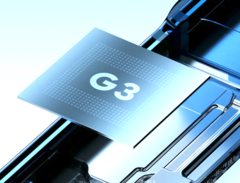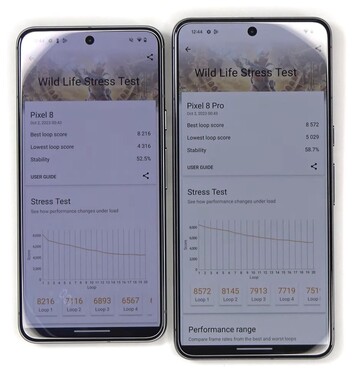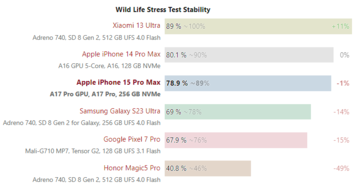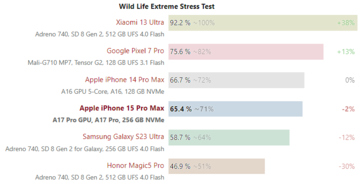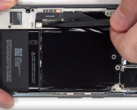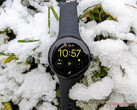The long-awaited Pixel 8 and Pixel 8 Pro from Google are finally “official” despite being unofficially leaked, and even then officially “leaked” over the past few months. In terms of their physical design, there isn’t much that is different since this design language was revealed by Google with the launch of the Pixel 6 series roughly three years ago. Google has refined the design and evolved it subtly, but effectively over that period. However, a point of real interest is how Google’s new Tensor G3 will perform, particularly through the eyes of tech enthusiasts.
Although Google likes to publicly claim all the credit for the Tensor chips, they have been the result of a close technical partnership with Samsung. This includes using Samsung LSI’s Exynos chip design architectures and Samsung Foundry’s silicon technology. As many are aware, Samsung’s own Exynos chips have underperformed largely because Samsung Foundry has been having issues optimizing its fabrication technology. The result has been chips that have been comparatively inefficient and can’t match the outright performance of the competition because this very inefficiency placeing limits on clock speeds. Current leakage (inefficiency) creates heat, which then creates instability under sustained loads.
Unsurprisingly, the same characteristics that have plagued Samsung’s Exynos chips have followed Google's Tensor-branded chips. Despite offering sufficient performance to keep things ticking along nicely for general use and daily tasks, the lack of outright performance hasn’t been as concerning as the lack of efficiency. This means that Pixel battery life is also lagging the competition. This hasn’t appeared to be as much of an issue for Pixel owners as it has for Samsung Galaxy owners – at least in the recent past – where in some cases Exynos chips were fitted to flagships in some markets, but better performing Snapdragon chips were fitted in other markets.
As is often the case these days, some lucky users have already got the Pixel 8 series in hand and have been publishing their benchmark results. The Tensor G3 is fabricated on Samsung’s 4LPP (4 nm, Low Power Plus) node – not its latest 4LPP+ node – and features a 9-core configuration with 1x Cortex-X3 (3.00 GHz), 4x Cortex-A715 (2.45 GHz), and 4x Cortex-A510 (2.15 GHz). In terms of CPU configuration, the Qualcomm Snapdragon 8 Gen 2 is similar with an 8-core configuration that looks like 1x Cortex-X3 (3.2 GHz), 2x Cortex-A715 (2.8 GHz), 2x Cortex-A710 (2.8 GHz), and 3x Cortex-A510 (2.00 GHz). It is made on TSMC’s much more efficient and performant N4 (4 nm) node.
Despite having one less core, one of the first Tensor G3 Geekbench results reveal disappointing results. Rather than being close to the Snapdragon 8 Gen 2, it has ended up being closer to the performance of last year’s Snapdragon 8+ Gen 1. While Google has been able to customize the Tensor more to its liking by partnering with Samsung such as fitting it with a Google-designed Tensor Processing Unit (TPU), Samsung’s node technology clearly continues to hamper its performance. This has also extended to the first GPU benchmark that has surfaced courtesy of @Tech_Reve, showing the new Pixel 8 models running the 3D Mark Wild Life Stress Test.
The Tensor G3 incorporates an Arm-designed Mali-G715 GPU, which like its CPU is, on paper, a solid design. Like the new Apple A17 Pro, it features hardware accelerated ray-tracing support, which makes it quite advanced. However, Samsung’s 4LPP node is shown failing to deliver again on this promise. The Wild Life Stress Test runs the 3D graphics scene from the regular Wild Life Test but on a loop over a 20-minute period. It tests the sustained performance of the GPU and its stability. Factors at play here include the GPU, the CPU, the node and the cooling system of the device. The Pixel 8 achieves a best loop score of 8,216 and a lowest loop score of 4,316 with a very low stability of just 52.5% whereas the Pixel 8 Pro achieves a best loop score of 8,572 and a lowest loop score of 5,029 with a slightly better stability at 58.7%. These are not pretty results.
Despite both models running the Tensor G3, the regular Pixel 8 does not have a vapor chamber, which helps to explain most of the disparity – the other being its slightly more thermally constrained design. The sustained performance does not stack up well to the Apple A17 Pro or the Snapdragon 8 Gen 2. In our iPhone 15 Pro Max review, the A17 Pro returned a stability result of 78.9% and the Snapdragon 8 Gen 2 returned a stability result of 69% in our Galaxy S23 Ultra review. In the substantially more demanding Wild Life Extreme Stress test, the iPhone 15 Pro Max stability drops to 65.4% while the Galaxy S23 Ultra drops to 58.7%.
Had the Tensor G3 been fabricated on a TSMC 5nm or 4nm node, there can be little doubt it would hold up much better in both Geekbench and the 3D Mark benchmarks. While it will still deliver good enough performance for day-to-day use, it seems unlikely that it will hold up in either performance or efficiency against its competition -- even though on paper it should. It's hard to imagine that this is anything but a sore point for Google in its relationship with Samsung -- Google wanted to differentiate with Tensor, just not in this way.
Make sure you check out our upcoming deep dive into the Pixel 8 series and the Tensor G3 chip coming up soon.
Purchase the Google Pixel 8 128GB (unlocked) in Obsidian from Amazon for $699.




